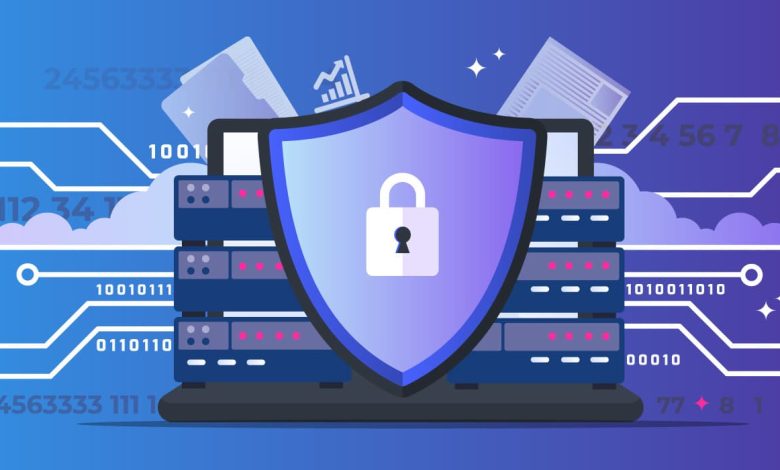Blockchain’s Role in Data Security

- Understanding the Basics of Blockchain Technology
- The Evolution of Data Security with Blockchain
- How Blockchain Ensures Data Integrity and Immutability
- Exploring the Decentralized Nature of Blockchain for Data Protection
- Challenges and Opportunities of Implementing Blockchain in Data Security
- Future Trends in Blockchain Technology and Data Security
Understanding the Basics of Blockchain Technology
Blockchain technology is a decentralized, distributed ledger system that securely records transactions across a network of computers. Each block in the chain contains a cryptographic hash of the previous block, timestamped transaction data, and a unique identifier. This structure ensures the integrity and immutability of the data stored on the blockchain.
One of the key features of blockchain technology is its transparency. All transactions are visible to all participants in the network, providing a high level of accountability and reducing the risk of fraud. Additionally, the decentralized nature of blockchain technology means that there is no single point of failure, making it highly secure against cyber attacks.
Blockchain technology is often associated with cryptocurrencies like Bitcoin, but its applications extend far beyond digital currencies. It can be used to securely store and transfer any type of data, from medical records to supply chain information. By eliminating the need for intermediaries and central authorities, blockchain technology streamlines processes and reduces costs.
In conclusion, blockchain technology offers a secure and transparent way to store and transfer data. Its decentralized nature and cryptographic security make it an ideal solution for ensuring data security in an increasingly digital world. As organizations continue to adopt blockchain technology, the potential for innovation and improved data security will only continue to grow.
The Evolution of Data Security with Blockchain
Data security has always been a top priority for businesses and individuals alike. With the rise of blockchain technology, there has been a significant evolution in how data is secured and protected. Blockchain offers a decentralized and immutable ledger that provides a high level of security for data storage and transactions.
One of the key features of blockchain technology is its ability to create a tamper-proof record of transactions. Each block in the blockchain contains a cryptographic hash of the previous block, creating a chain of blocks that are linked together. This makes it nearly impossible for hackers to alter the data stored on the blockchain without being detected.
Another important aspect of blockchain technology is its use of consensus algorithms to validate transactions. This means that transactions must be verified by a majority of participants in the network before they are added to the blockchain. This decentralized approach to validation helps to prevent fraud and unauthorized access to data.
Blockchain technology also offers enhanced data encryption capabilities. Data stored on the blockchain is encrypted using advanced cryptographic techniques, making it extremely difficult for unauthorized parties to access or decipher the information. This added layer of security helps to protect sensitive data from cyber attacks and data breaches.
Overall, the evolution of data security with blockchain has revolutionized the way that data is stored and protected. By leveraging the decentralized and immutable nature of blockchain technology, businesses and individuals can ensure that their data remains secure and tamper-proof. As the use of blockchain continues to grow, we can expect to see even greater advancements in data security in the future.
How Blockchain Ensures Data Integrity and Immutability
Blockchain technology plays a crucial role in ensuring data integrity and immutability. By utilizing a decentralized and distributed ledger system, blockchain provides a secure and transparent way to store data. This technology uses cryptographic hash functions to create a unique fingerprint for each block of data, making it virtually impossible to alter or tamper with the information stored within the blockchain.
One of the key features of blockchain is its ability to create a chain of blocks that are linked together in a chronological and linear order. Each block contains a reference to the previous block, along with a timestamp and transaction data. This structure makes it easy to track any changes made to the data, as any alteration would require changing all subsequent blocks in the chain, which is computationally infeasible.
Moreover, blockchain networks rely on a consensus mechanism to validate and add new blocks to the chain. This process ensures that all participants in the network agree on the validity of transactions, further enhancing the security and integrity of the data stored on the blockchain. Additionally, the decentralized nature of blockchain means that there is no single point of failure, making it highly resistant to cyber attacks and data breaches.
Exploring the Decentralized Nature of Blockchain for Data Protection
Exploring the decentralized nature of blockchain for data protection is crucial in understanding how this technology enhances security measures. Blockchain, a distributed ledger technology, offers a unique approach to safeguarding data by eliminating the need for a central authority. Instead, data is stored across a network of computers, making it nearly impossible for hackers to manipulate or corrupt information.
One of the key features of blockchain is its immutability, meaning that once data is recorded on the blockchain, it cannot be altered without the consensus of the network. This ensures the integrity of the data and reduces the risk of unauthorized access. Additionally, blockchain uses cryptographic techniques to secure transactions, further enhancing data protection.
By leveraging blockchain for data security, organizations can create a transparent and tamper-proof system for storing sensitive information. This not only helps in preventing data breaches but also builds trust among users and stakeholders. Furthermore, the decentralized nature of blockchain reduces the reliance on centralized servers, minimizing the risk of single points of failure.
Challenges and Opportunities of Implementing Blockchain in Data Security
Implementing blockchain in data security presents both challenges and opportunities for organizations looking to enhance their cybersecurity measures. While blockchain technology offers a decentralized and tamper-proof way to store data, there are still obstacles that need to be overcome in order to fully leverage its potential.
- One of the challenges of implementing blockchain in data security is the complexity of the technology itself. Organizations may struggle to understand how blockchain works and how to integrate it into their existing systems.
- Another challenge is the scalability of blockchain. As more data is added to the blockchain, the size of the network grows, which can lead to slower transaction speeds and increased costs.
- Additionally, there are concerns about the privacy and confidentiality of data stored on a blockchain. While blockchain is secure, it is not completely anonymous, and there are ways for malicious actors to potentially access sensitive information.
Despite these challenges, there are also opportunities for organizations to improve their data security through the implementation of blockchain technology. By using blockchain, organizations can create a transparent and immutable record of all data transactions, making it easier to track and verify the integrity of data.
Furthermore, blockchain can help organizations reduce the risk of data breaches and cyber attacks by eliminating single points of failure. Since blockchain is decentralized, there is no central server that can be targeted by hackers, making it more difficult for them to compromise the system.
In conclusion, while there are challenges to implementing blockchain in data security, the opportunities for enhancing cybersecurity measures are significant. By addressing the complexities of the technology and leveraging its benefits, organizations can strengthen their data security and protect against potential threats in an increasingly digital world.
Future Trends in Blockchain Technology and Data Security
As technology continues to evolve, the future trends in blockchain technology and data security are becoming increasingly important. Blockchain, with its decentralized and immutable nature, is poised to play a significant role in enhancing data security across various industries. Here are some key trends to watch out for:
- Interoperability: One of the key trends in blockchain technology is the focus on interoperability. This means that different blockchain networks will be able to communicate and transact with each other seamlessly, enhancing data security by creating a more interconnected and secure ecosystem.
- Scalability: Another important trend is the focus on scalability in blockchain technology. As more data is being stored and transacted on the blockchain, there is a need for solutions that can handle large volumes of transactions quickly and efficiently without compromising security.
- Privacy: With the increasing concerns around data privacy, blockchain technology is evolving to incorporate more privacy features. Techniques such as zero-knowledge proofs and homomorphic encryption are being explored to enhance data security and protect user privacy.
- Regulatory Compliance: As blockchain technology becomes more mainstream, there is a growing emphasis on regulatory compliance. Solutions that can ensure compliance with data protection regulations such as GDPR are being developed to enhance data security and build trust among users.
- AI Integration: The integration of artificial intelligence (AI) with blockchain technology is another trend to watch out for. AI can help enhance data security by detecting anomalies and potential threats in real-time, making the blockchain ecosystem more secure and resilient.
Overall, the future of blockchain technology and data security looks promising, with advancements in interoperability, scalability, privacy, regulatory compliance, and AI integration paving the way for a more secure and efficient digital ecosystem.
